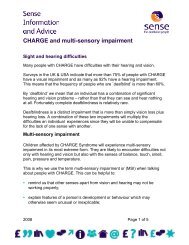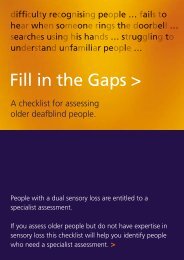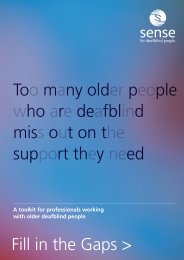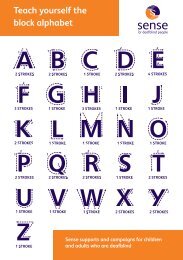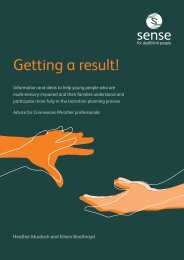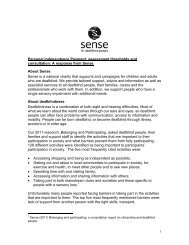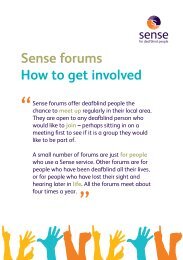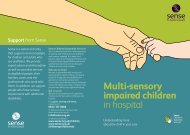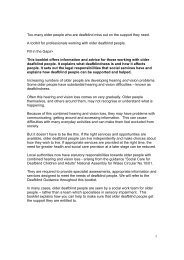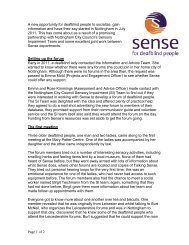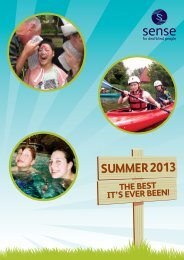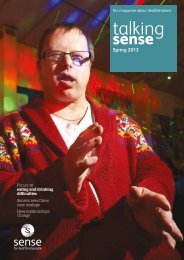MSI Unit Curriculum - Sense
MSI Unit Curriculum - Sense
MSI Unit Curriculum - Sense
You also want an ePaper? Increase the reach of your titles
YUMPU automatically turns print PDFs into web optimized ePapers that Google loves.
<strong>MSI</strong> <strong>Unit</strong> <strong>Curriculum</strong>: Phase 1Pupils have a designated space in the classroom, with clear boundaries, often inthe form of ‘walls’ which the pupil can touch by reaching out. Each pupil’s spaceis designed to reflect their personal sensory preference (for example, soft or hardsurfaces). The layout of this designated space, and the objects available withinit, are kept consistently the same. Pupils move out from their designated spaceto participate in activities, and are helped to retreat back to their space at anypoint if necessary.Some pupils enjoy very small environments such as large cardboard boxesor Little Rooms, where the boundaries of the environment are immediatelyaccessible. Any objects used in such spaces are anchored so that pupils canreturn to them and are kept unchanged unless the pupil is supported by afamiliar adult.Orientation, movement and mobilityPupils’ movements are not directed towards particular purposes. They areaware of some sensations from their environment but cannot organise orintegrate these.They do not reliably differentiate between self and environment.Massage is used to help develop pupils’ awareness of different parts of theirbodies. Coactive movement is used to extend pupils’ movement patternsgradually.Pupils have their own designated space within the classroom with clearboundaries. Staff reinforce and develop any attempts by pupils to navigate thisenvironment (for example to reach a favourite cloth or toy) by helping the pupilto move towards the item, rather than by bringing the item to the pupil.Reactive physical environments are used to emphasise the boundaries betweenpupils and their environments. Settings are chosen on the basis of individualneeds – for example, pupils with high levels of movement may respond well toenvironments with clear, comfortable boundaries, such as huge cardboard boxes.Highly reactive environments such as resonance boards may be used forearly work on orientation and location of objects with pupils who tolerate theamplified vibrations well.Staff assist pupils to explore aspects of the classroom environment, such asfloor surfaces. The aspects to be explored are chosen on the basis of pupils’sensory and movement preferences (for example, using pupils’ highly repetitivemovements), and initially the exploration is likely to be fleeting.29




